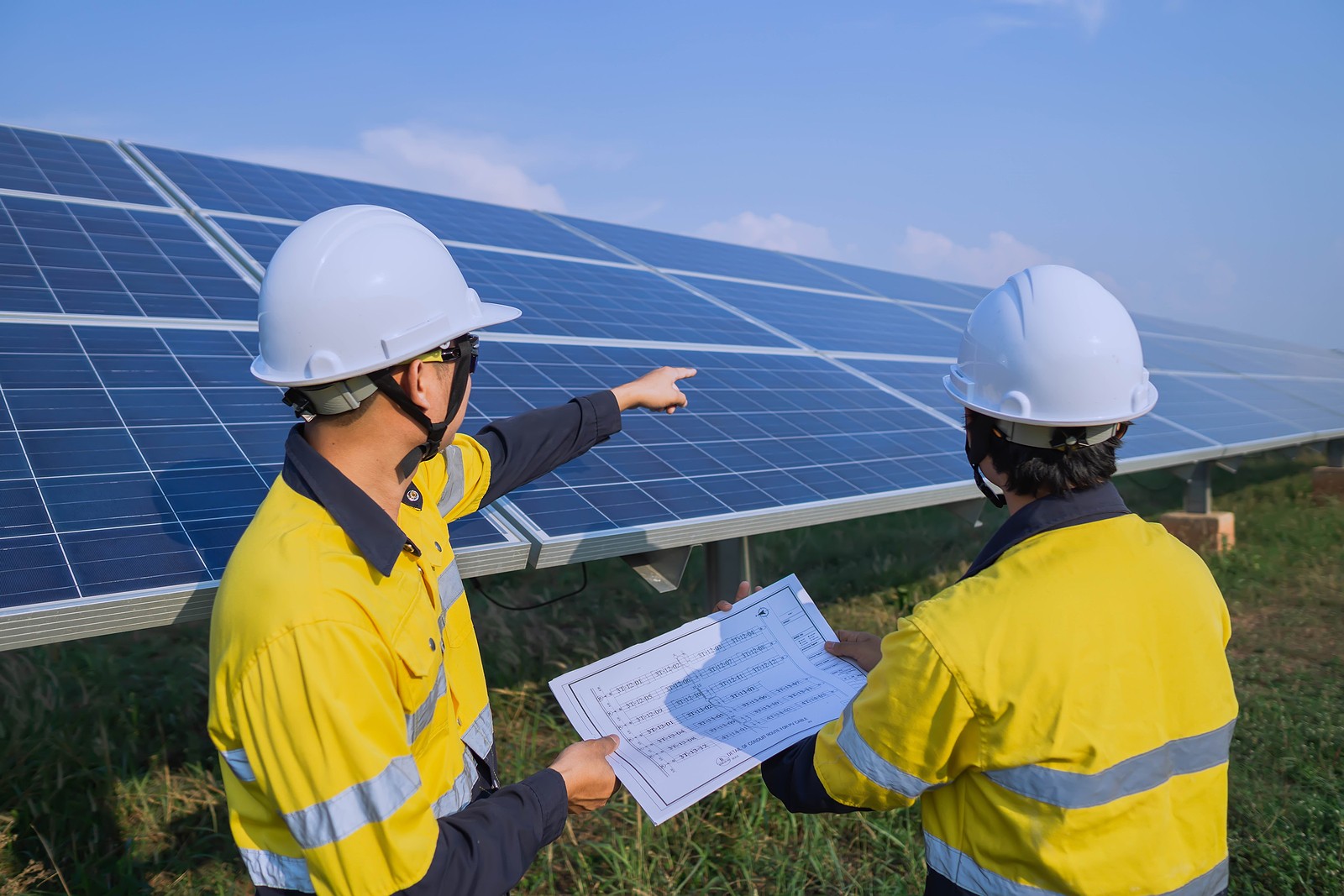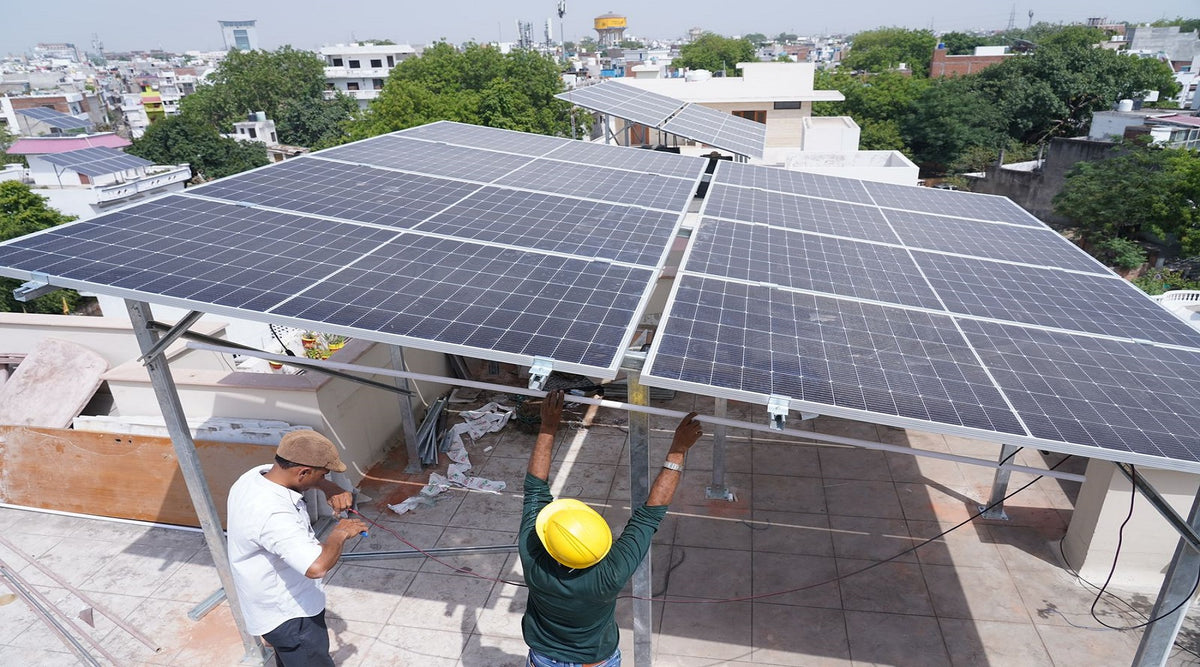Solar Installation Experts: Renewable Energy Systems Harness Sunlight To Create Clean Electrical Power For Residences And Services
History and Advancement of Solar Panels
Have you ever stopped to question how a basic piece of technology turned sunshine into electricity? The journey of photovoltaic panels is absolutely nothing except a modern-day epic, woven with moments of curiosity, development, and a dash of serendipity. It was back in 1839 when Edmond Becquerel, a young French physicist, saw that particular materials produced little electrical currents when exposed to light. This discovery planted the seed for what would ultimately end up being the photovoltaic transformation.
Early Milestones in Solar Technology
- 1876: William Grylls Adams and his trainee Richard Evans Day showed that selenium could produce electrical energy from light, a precursor to contemporary solar cells.
- 1954: Bell Laboratories revealed the first useful silicon solar cell, which transformed sunshine to electrical power at about 6% performance.
- 1960s: Solar panels found a niche in powering satellites, showing their worth in space expedition.
Isn't it interesting how something created for orbit eventually discovered its way to rooftops worldwide? The trajectory of photovoltaic panels from experimental curiosities to trusted energy sources mirrors the wider dance of human resourcefulness and ecological awareness.
Key Advancement That Shaped Solar Panels
| Year | Innovation | Impact |
|---|---|---|
| 1970s | Thin-film solar batteries presented | Decreased product costs, increased versatility |
| 1980s | Improvements in silicon purity | Boosted efficiency and life expectancy |
| 2000s | Advancement of multi-junction cells | Enhanced energy conversion rates significantly |
Reflect for a moment: how did these incremental enhancements modify the landscape of sustainable energy? By continuously pressing limits, solar technology transformed from a specific niche development into an international powerhouse. The efficiency and cost of photovoltaic panels rose, igniting a wave of adoption that appeared difficult just a few years before.
Personal Insight: A Sunlit Surprise
I remember visiting a little rural village where the installation of solar panels stimulated an extensive change. Kids studied under brilliant LED lights powered completely by the sun. It struck me-- this innovation didn't simply convert photons; it transformed hope into concrete progress. Isn't that the supreme power of solar power?
In the grand tapestry of energy history, photovoltaic panels stick out as a beacon-- a testament to human willpower and the relentless pursuit of cleaner, sustainable futures. From the curious experiments of 19th-century researchers to the streamlined, effective varieties we see today, the story of photovoltaic panels advises us that in some cases, the brightest concepts start with a basic ray of light.
Unveiling the Spectrum: Types of Photovoltaic Panel Technologies
Ever wondered why some photovoltaic panels shine like glass while others resemble dark, matte tiles? The secret lies deep in their innovation. From crystalline silicon to thin films, photovoltaic panels come in a selection of styles, each with its peculiarities and efficiencies.
Crystalline Silicon Panels: The Workhorse of Solar
Monocrystalline and polycrystalline panels dominate the landscape. Monocrystalline, fashioned from a single silicon crystal, provides the greatest performance rates-- in some cases exceeding 22%. This comes at an expense: their manufacturing process is energy-intensive. Polycrystalline panels, on the other hand, are made from numerous silicon pieces melted together. They sport a particular speckled blue color and typically fall a little behind in efficiency, hovering around 15-17%. Yet, they frequently cost less upfront.
Picture installing a monocrystalline variety on your rooftop; the streamlined black panels absorb the sun's rays like a sponge. What if your roof's shape or shading isn't ideal? Polycrystalline panels might handle partial shading much better, a subtlety typically neglected.
Thin-Film Solar Panels: Flexibility Meets Innovation
Thin-film innovation departs from the bulky silicon wafers and instead layers photovoltaic product on substrates like glass, plastic, or metal. Cadmium telluride (CdTe) and copper indium gallium selenide (CIGARETTES) are popular thin-film products using lightweight and flexible alternatives.
- Thin-film panels tend to perform better in low-light or high-temperature environments.
- They're less effective general-- generally around 10-12%-- however their flexibility can be a game-changer for unconventional setups.
- Because they're lighter, they're often preferred for roofs unable to support heavy loads.
Emerging Technologies and the Road Ahead

Perovskite solar cells, often hailed as the next big leap, have actually stirred enjoyment for their prospective to reach effectiveness equivalent to silicon panels but at a fraction of the cost. Their longevity remains under scrutiny, similar to a promising unique whose ending is still unwritten.
Have you ever grappled with the aggravation of your solar output dipping all of a sudden? In some cases, the perpetrator isn't dirt or shading but the panel's inherent reaction to temperature level variations. For instance, crystalline silicon panels tend to lose performance as temperature levels skyrocket, typically by about 0.5% per degree Celsius above 25 ° C. Expert Tips for Choosing the Right Innovation
- Evaluate your environment: Is your location prone to high heat or regular cloud cover? Thin-film panels might outperform silicon in these conditions.
- Think about installation restrictions: Limited roofing area? Monocrystalline panels pack more power per square foot.
- Examine long-term sturdiness: Silicon panels have decades of proven dependability, while new technologies like perovskite are still showing their nerve.
- Consider visual appeals and combination: Some property owners value the smooth black appearance of monocrystalline panels, while others choose the less meddlesome thin-film choices.
| Innovation | Common Efficiency | Strengths | Considerations |
|---|---|---|---|
| Monocrystalline Silicon | 20-22% | High effectiveness, sleek look | Higher production energy, cost |
| Polycrystalline Silicon | 15-17% | Lower expense, easier production | Less efficient, blue speckled look |
| Thin-Film (CdTe, CIGS) | 10-12% | Lightweight, versatile, excellent in shade | Lower effectiveness, shorter lifespan |
| Perovskite (Emerging) | 15-20% (lab scale) | Possibly low cost, high efficiency | Stability and longevity issues |
Installation: The Unsung Hero of Solar Efficiency
Picture planting a seed in rocky soil and anticipating a worthwhile tree. That's what photovoltaic panel setup seems like when done without precision. The angle and orientation of your panels can make or break the energy harvest. Panels angled incorrectly may indulge in sunlight, however they won't convert it effectively.
South-facing roofing systems generally absorb the most sun in the northern hemisphere, but what about roofs that face east or west? Tilt adjustments can compensate, however not completely. The difference between 15 degrees and 30 degrees tilt can easily equate into a 10-15% drop in annual output.
Pro idea: When installing, avoid shadows cast by chimneys, trees, or perhaps neighboring structures. here Just a small shadow on one cell can minimize the whole panel's output considerably. Remember, solar cells are like dominoes; if one falls, the rest follow.
Secret Installation Elements Impacting Effectiveness
- Panel Orientation: South-facing is optimum in lots of areas but think about geographical specifics.
- Tilt Angle: Adjust seasonally or repair at the average ideal angle for your latitude.
- Shading: Even periodic shadows can cause disproportionate energy loss.
- Roofing Material: Reflective surfaces can increase panel temperatures, minimizing efficiency.
- Ventilation: Panels carry out best when air flows beneath, preventing overheating.
Efficiency Elements: Beyond the Surface
Heat is a tricky burglar. High temperatures break down photovoltaic effectiveness. Panels rated at 25 ° C can lose 0.5% effectiveness per degree above that. In scorching summertimes, that theft builds up, making a shaded but cooler panel exceed a hotter, "perfectly lit" one.
Ever discovered how a newly installed range appears to hum with pledge but slowly dips in output? Dust and grime do their part, but so does intrinsic degradation. Panels lose about 0.5% to 1% effectiveness each year, a subtle decline that substances calmly.
Advanced Tips for Maximizing Performance
- Microinverters: Usage these to guarantee that shading or breakdown in one panel doesn't drag down the entire system.
- Bypass Diodes: They help keep output by isolating shaded or broken cells within a panel.
- Routine Monitoring: Track output daily to capture dips triggered by unforeseen aspects like bird droppings or debris.
- Optimize Electrical Wiring: Thicker cable televisions decrease resistance loss, especially in larger systems.

| Aspect | Effect on Effectiveness | Expert Suggestion |
|---|---|---|
| Panel Temperature level | 0.5% performance loss per ° C above 25 ° C | Set up panels with air flow beneath for cooling |
| Shading | As much as 80% output reduction from partial shading | Trim surrounding foliage routinely |
| Orientation & & Tilt | 10-15% yearly output variation | Adjust tilt seasonally if possible |
| Electrical wiring Resistance | 2-5% energy loss in improperly sized cable televisions | Use properly determined cable televisions |
Environmental Impact and Advantages of Solar Panels
Have you ever stopped briefly to consider how the sunshine caught on your roof transforms into tidy, eco-friendly energy!.?. !? Photovoltaic panel act like quiet guardians against the relentless march of carbon emissions, turning photons into power without a whisper of contamination. The environmental footprint of solar technology is terribly lighter compared to fossil fuels, however it's not without its intricacies.
One typically overlooked aspect is the life cycle analysis of solar panels-- from raw product extraction to end-of-life disposal. Mining for silicon and rare metals can stir environmental ripples, yet advances in recycling innovations guarantee to close the loop more effectively than ever in the past. Imagine a future where photovoltaic panel waste becomes the raw product for the next generation of cells-- circular and sustainable.
Secret Environmental Benefits
- Reduction in greenhouse gases: Solar panels produce no emissions throughout operation, significantly cutting the carbon footprint of electricity generation.
- Water conservation: Unlike traditional power plants, photovoltaic panels require minimal water, reducing tension on water environments.
- Air quality improvement: By displacing coal and natural gas plants, solar energy reduces hazardous contaminants that contribute to smog and breathing illnesses.
- Land use effectiveness: Combination of solar panels on roofs and metropolitan spaces decreases disruption to natural habitats.
Unforeseen Insights
Did you know that the energy payback time for modern-day photovoltaic panels has diminished dramatically? Early models required years to balance out the energy purchased their manufacture. Today, some panels recover cost in under two years, a testament to leaps in manufacturing efficiency. This suggests the environmental "cost" is repaid faster, leaving years of clean energy ahead.
Determining the ecological trade-offs requires a nuanced eye. For circumstances, using dangerous chemicals throughout production demands stringent controls-- overlooked in popular stories however crucial to sustainable deployment. What if we utilized bioplastics or natural photovoltaics to soften this effect further? The horizon is wide open for development.
Tips for Making The Most Of Environmental Advantages
- Choose panels with high-efficiency ratings to produce more power per square meter, reducing material usage.
- Think about the positioning and angle carefully-- shadowing and dirt build-up can quietly wear down ecological gains by reducing output.
- Engage with accredited recyclers who specialize in solar elements to guarantee accountable end-of-life handling.
- Track and enhance your system's performance with smart monitoring tools to capture dips in efficiency early.
| Ecological Element | Solar Panels | Coal Power Plants |
|---|---|---|
|
CO. 2Emissions. |
Near zero operational emissions | High emissions per kWh created |
| Water Use | Minimal water utilize | Significant water consumption for cooling |
| Land Effect | Low, particularly on rooftops | High, typically requiring mining and garbage disposal |
| Waste Generation | Recyclable parts increasing | Toxic by-products requiring disposal |